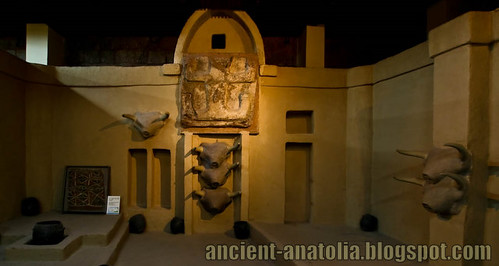
Living in a neolithic Çatalhöyük House at Mid-Anatolian Plateau, Konya, Turkey. Exhibition at Museum of Anatolian Civilizations, Ankara, Turkey.

Adobe building material and construction technique used by Hittites are still used in Turkish villages as seen in Ballihisar village near Pessinus.

Ox heads at neolithic Çatalhöyük House at Museum of Anatolian Civilizations, Ankara, Turkey.

Ox head is the sacred symbol of the power and the letter A, (a, a, alpha, aleph).
More on Neolithic Living in Anatolia:
An Expedition into the Origins of Civilization: Çatalhöyük
Boncuklu Höyük: New settlement discovered in Konya, Turkey, dating back 11,000 years
O Cybele, Mother Goddess...
Archaeological Importance & History of Pinarbasi - Konya
Earliest Urban Societies & Empires: HRH Prince Charles @ Çatalhöyük Site @ Konya, Turkey
Eflatunpinar Hittite Spring Temple & Dam
Early Neolithic site in southeastern Turkey dated to 11000 years ago: Göbekli Tepe, Urfa